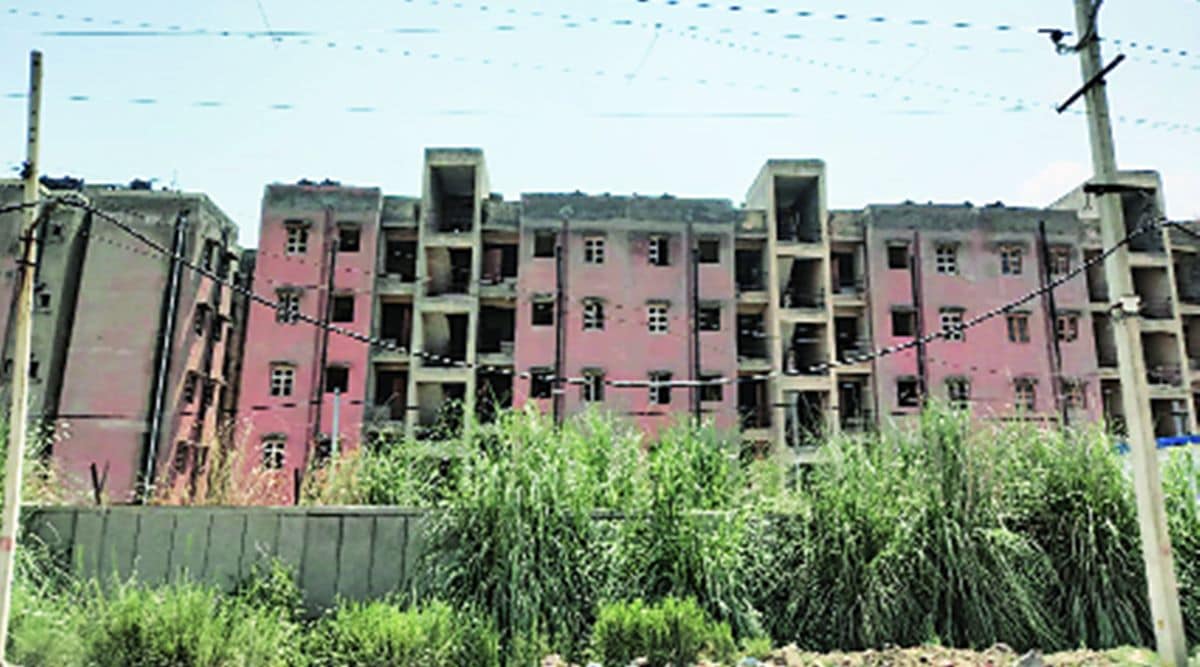 The Bhalswa housing complex is around 25 km from CP.
The Bhalswa housing complex is around 25 km from CP. Long deserted with parts of buildings crumbling, broken windows, plumbing and wiring work remaining, unswept interiors — plenty of work needs to be done at the two largest economic housing complexes which the Delhi government said can be used to resettle residents of jhuggis along railway tracks who face imminent eviction.
On September 11, the Delhi government wrote to the Northern Railways stating that demolishing jhuggis along the tracks without providing alternative living arrangements to residents is illegal, as per existing protocol. This came after the Supreme Court ordered the eviction of all jhuggis near railway tracks in Delhi within three months, which according to official estimate comes up to approximately 48,000 households.
The letter, written by officials of Delhi Urban Shelter Improvement Board (DUSIB), states that at the earliest, it can provide 1,060 flats by December 2020 in a complex in Sultanpuri which is currently functioning as a Covid centre. It listed eight sites in which flats can be readied by March 2021, of which the most flats are at Bhalswa, with 7,400 flats, and Savda Ghevra, with 6,476 flats.
Both economic complexes are sprawling ghost towns, with construction having begun in 2012 under the Jawaharlal Nehru National Urban Renewal Mission (JNNURM) and with most of the construction completed by 2018.
However, as tower after tower came up, they remained deserted with no residents, and now exhibit signs of neglect. Work crews in both complexes are now carrying out repairs — fixing wiring and plumbing, whitewashing and painting the grey buildings, fixing cracks on the walls and edges of the towers. “Later, we will fix the many broken windows. By now, we have completed interior work in around three towers. I think we will be able to complete all the work by February,” said a supervisory member of the contractor’s team at work in Bhalaswa.
However, despite the neglect that these sites have gone through and their distance from the city centre — Bhalswa is around 25 km from Connaught Place and Savda Ghevra is around 27 km away — over time these areas have become well-connected to the expanding city.
When construction started, there was no immediate Metro connectivity at the Savda Ghevra complex, located at the Haryana-Delhi periphery with neighbouring farmlands. However, with the extension of the Green Line in 2018, the Ghevra Metro station is a 10-rupee rickshaw ride away.
The Bhalswa complex is surrounded by a buzzing urban village and a large JJ colony. “This area is not remote like some of the resettlement sites in Narela and Baprola. We are a Rs 20 rickshaw ride away from Jahangirpuri Metro station. There are bus stops on two sides of the complex. Markets are right here,” said Khursheed Khan, a resident living close to the resettlement site.
Savda Ghevra is also a space of a lot of work for expansion of education infrastructure. Sarvodaya Bal Vidyalaya, Sawada (Ghevra) Colony, B Block, is currently in the process of having new buildings built, while inside the resettlement area, a site has been earmarked for construction of a senior secondary school.
📣 The Indian Express is now on Telegram. Click here to join our channel (@indianexpress) and stay updated with the latest headlines
For all the latest Delhi News, download Indian Express App.